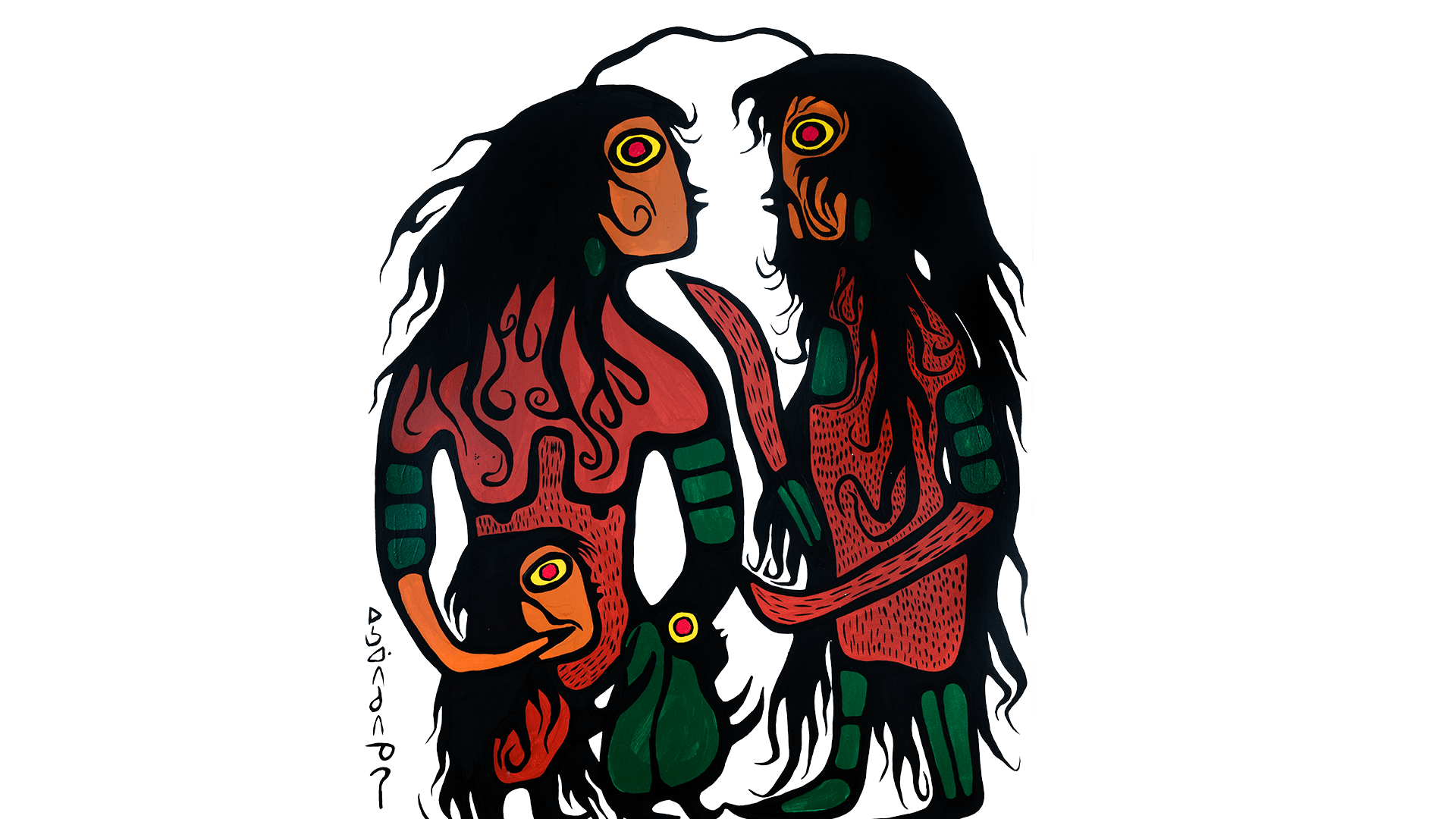2005
Suffering from Parkinson’s Disease, Morrisseau moves into a nursing home in Nanaimo, BC, close to Gabe Vadas and his family.
Morrisseau and Vadas formally create the Norval Morrisseau Heritage Society (NMHS) with the aid of lawyer Aaron Milrad to create a catalogue raisonne of Morrisseau’s oeuvre after he becomes aware of the growing problem of fake works in the art market.
Original members of the NMHS include Richard Baker, Greg Hill, Lee-Ann Martin, Viviane Gray, Elizabeth McLuhan, and Ruth Phillips.
After years of targeted online abuse towards the group, the NMHS continues to work toward Morrisseau’s goal.
Today the NMHS is working on the first thirty years of Morrisseau’s artistic career as part of the Morrisseau Project: 1955-1985.
